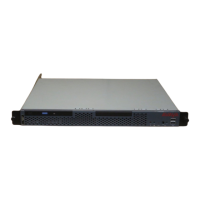Converting a processor port network to a port network
Migrating to the Avaya S8700 or S8710 Media Server 79
June 2004
Connecting to the processor
1 Use the computer used to access the cabinet
2 Open a SAT session using Native Configuration Manager or Avaya Site Administration.
3 Log in as craft.
Verifying system status
You want to check which groups are in or out of service before the migration and compare the list after
the migration to make sure they are the same.
1 Execute the following commands to see whether the system has administration:
a list configuration all
b list trunk-group
c list hunt-group
If any command does not complete successfully, escalate the problem immediately. After the
conversion, check the same administration to be sure that the translations are intact.
Recording all busyouts
1 Type display errors and press Enter. Look for type 18 errors and record any trunks that are
busied out, so you can return them to their busy-out state after the conversion.
NOTE:
Because of a change in Release 1.3 of Avaya Communication Manager, you no longer
need to disable Terminal Translation Initialization (TTI) before a migration or an upgrade
or enable it afterwards.
Note node names and IP addresses
Note the node names and IP addresses assigned to the TN2302AP IP Media Processor and TN799C/DP
C-LAN circuit packs. You want to make sure they are the same after the migration.
NOTE:
If the existing system has TN799C C-LAN circuit packs, you must replace them with
TN799DP circuit packs.
1 Type display ip-interfaces and press Enter to get the node names for the TN2302AP IP Media
Processor and TN799C/DP C-LAN circuit packs.
2 Type list node-names and press Enter to get the IP addresses that match the node names.
3 Write the information down for after the migration.
Saving translations
NOTE:
When the source version is csi or si, save translations to a flash card. When the source
version is G3r, save translations to disk, optical diskette, or tape.

